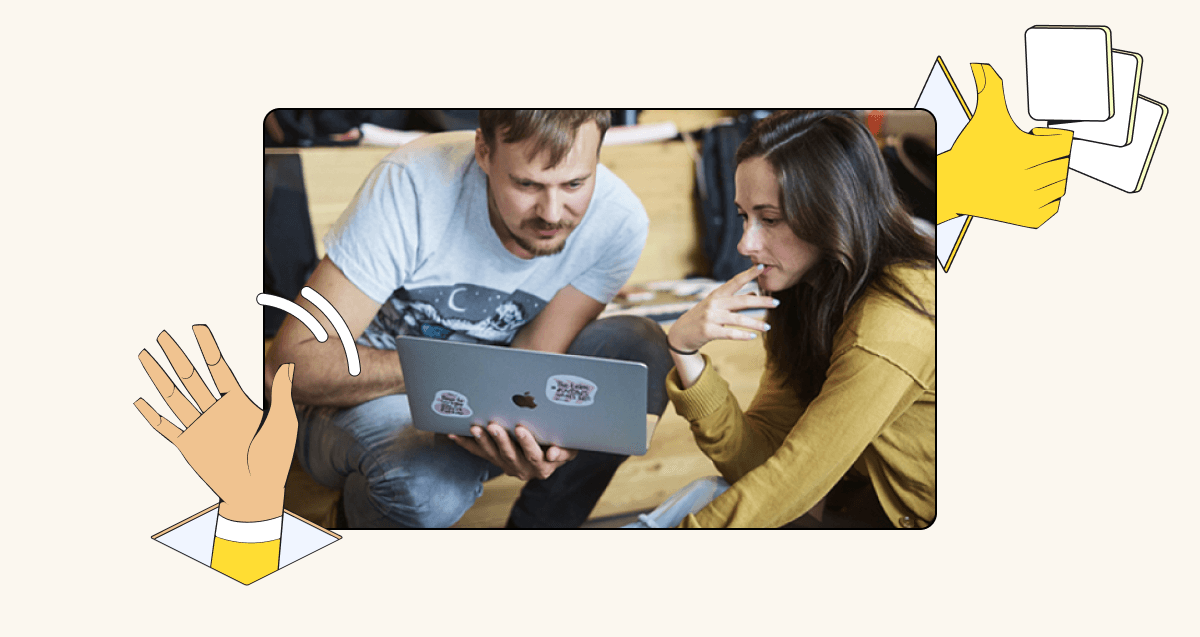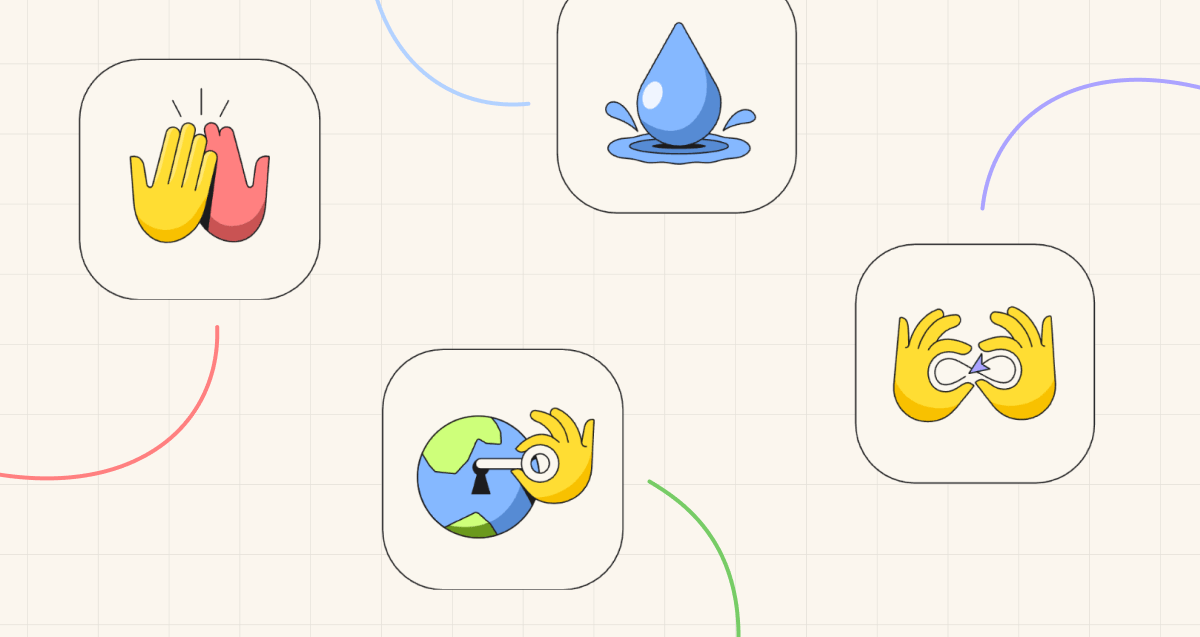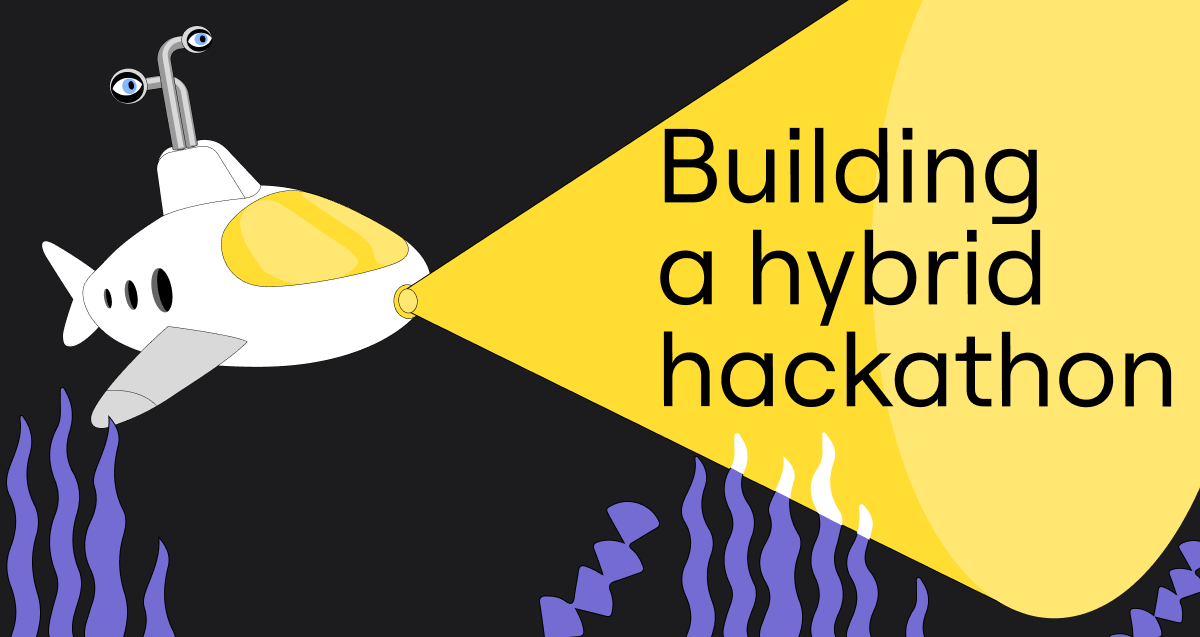Today we’re joined by Anya Dvornikova, our Learning Design Program Lead. In this blog, we take a deep dive into one of Miro’s growth drivers: our organic feedback culture. Anya walks us through the behaviors, actions, and processes behind one of Miro’s secrets for a successful collaborative culture.
Heya! I’m Anya. I’m one of the lucky ones to have seen Miro’s explosive growth since I joined in 2017. When I started on the People team almost five years ago, we were a small team of five. Now we’re at over 100 and counting! With headquarters in Amsterdam and San Francisco and hubs around the world, our team ensures engagement and a sense of belonging among the 1,800+ Mironeers. My favorite part of my work is digging into the needs of our employees with design experiments, processes, and activities that support and resonate with them.
Miro’s distributed setting led me to relocate to California in 2019. Since then, I’ve been fascinated by the diverse sceneries of the United States — from the majestic mountains to the pristine sand of the desert — and am constantly exploring the bucolic landscapes.
Like the American landscape, Miro is a place where a great variety of people come together to create a shared vision for our innovative and lovable product. Working across differences in a global team is impossible without a strong feedback culture. Here are a few examples of how we cultivate an organic feedback model at Miro.
Feedback is part of our cultural DNA
I find Miro to be unique in that we treat culture as a product. We drive our growth through continuous improvement. We are always on the lookout for new ideas and inputs from our colleagues. We even refer to the things we need to change as “bugs,” which could be anything from tasks to behaviors. This awareness creates a shift in those behaviors and enables us to work more efficiently and feel more fulfilled. At Miro, we also focus on both the ability to give and receive feedback, resulting in more considerate and empathetic communication. By listening to and embracing each other’s feedback, we are able as a company to move forward together at a faster rate. It also makes our workplace so much more humane. For these reasons, we aim at creating the best environment for our employees to thrive.
The necessity for trust and a safe environment
Honest and meaningful feedback only occurs in an environment where people feel safe to openly express their opinions. Miro is committed to building this kind of culture. Not only do people seek praise and recognition but constructive feedback that helps them learn, grow, and maximize their potential. Feedback is also an important factor in defining work relationships. Strong relationships are highly associated with significant health outcomes — such as lower burnout and depression risks — and strengthen the sense of belonging and job satisfaction.
At Miro, one of our key factors in enabling a safe environment is tied to our company value of collaboration. We encourage and challenge each other through open conversations. We go beyond transactional relationships to emphasize cross-functional, global team collaboration. By sharing knowledge this way, we make use of everyone’s strengths. People don’t need to wait for a performance review to know if they are doing a great job.
Of course, leaders play their role in creating the feedback culture too. Like a domino effect, I believe good examples lead to engagement. Because our feedback interactions occur regardless of position or location, everyone is empowered to take their growth into their own hands. Solely asking your employees to give more feedback is insufficient to create new habits where feedback becomes part of everyone’s daily practice. You must create milestones and design employee moments to engage employees in observing, assessing, commenting, and improving daily.
Enabling feedback means creating milestones
At Miro, our journey towards an organic feedback culture begins with the recruitment process. Our recruiters ensure that candidates are motivated and excited about the direction we are collectively heading as a company. We are looking for people who are energized and inspired by our collaborative approach and open culture. During our onboarding program, in addition to learning how to use Miro, new employees also receive practical training in offering and receiving feedback. By the end of the 60 days’ onboarding period, Mironeers get 360-degree feedback from their leads as well as team members and themselves. During a 30-minute debrief meeting, new employees and their managers then work together on creating a plan for how they will integrate the feedback they received. They’re also asked to share their own onboarding experience with the People team so we can iterate and improve our onboarding process. In addition, self-learning courses, templates, and videos are available to all.
After onboarding, a Slack recognition channel is our favorite place to give praise to our colleagues on a daily basis. This channel is linked to our performance management platform, where your lead can read about your positive contributions. This way, no good deed goes unnoticed. We also try to have feedback embedded into regular workflows through team retrospectives and discussions.
Embedded tools to enable an organic feedback culture
For me personally, the most exciting way to use feedback is combining it with our Miro tool. As a concrete example, in 2020 when the global pandemic first hit and the United States was experiencing a lot of social unrest, Mironeers longed for empathy from their colleagues and a way to process tough emotions. Our team decided to embrace those feelings by creating an interactive Emotion Wheel Icebreaker that we used at the beginning of All Hands meetings. We gave participants a moment to name their emotions with the Emotion Wheel and offered an opportunity to share, listen, and help each other connect. It was a beautiful way to acknowledge the power of empathy. The Emotional Wheel Icebreaker taught us that feedback can take many forms, including an interactive, visual exercise on a digital whiteboard, making space for all methods and degrees of emotional connection.
We added the icebreaker to Miroverse and it went a little bit viral. It gives me a signal too: conversations like this are very much needed in a workplace, even though at first glance we might not see their direct connection to business goals. The Miro user community using and sharing each other’s designs is also another illustration of the feedback loop in action. Feedback comes from anyone and everyone.
Feedback is our growth driver
Learn, grow, and drive change is one of our embedded values that underpins the mission of supporting people’s growth and continuous learning. We reflect openly on our successes and failures as a company, and apply those learnings to our work, team, and self-development. At Miro, we make it a practice to challenge each other, look at the data, brainstorm new ways to approach feedback, and look outside the box.
From my perspective, a culture based on regular feedback creates stronger working relationships and more effective teams. I like to imagine being in the Olympics, challenging each other to set new records, unlocking the potential I didn’t know I had. At Miro, that’s how we set the stage for continuous feedback and improvement.



